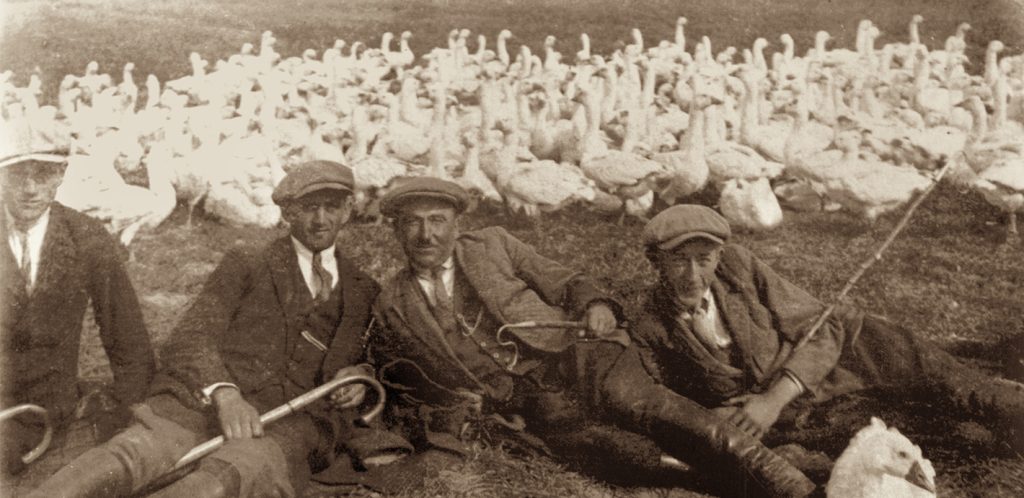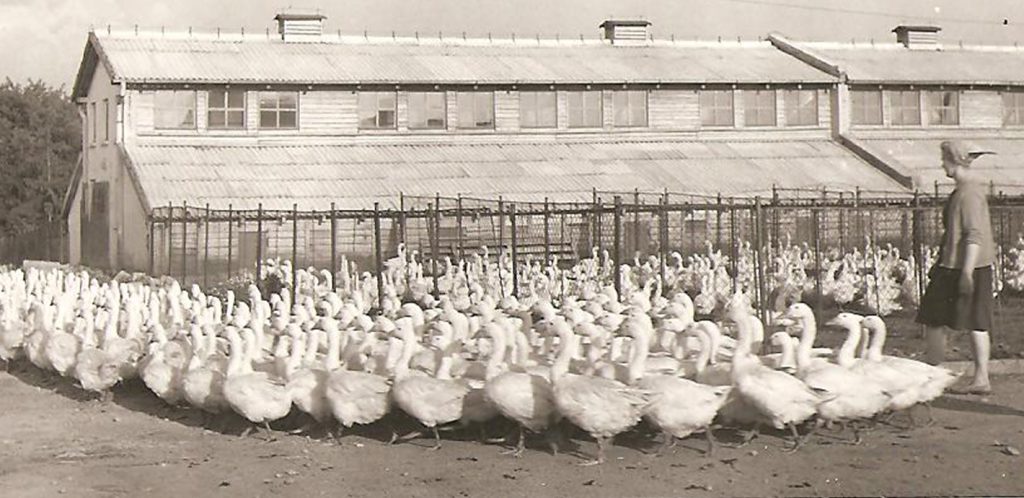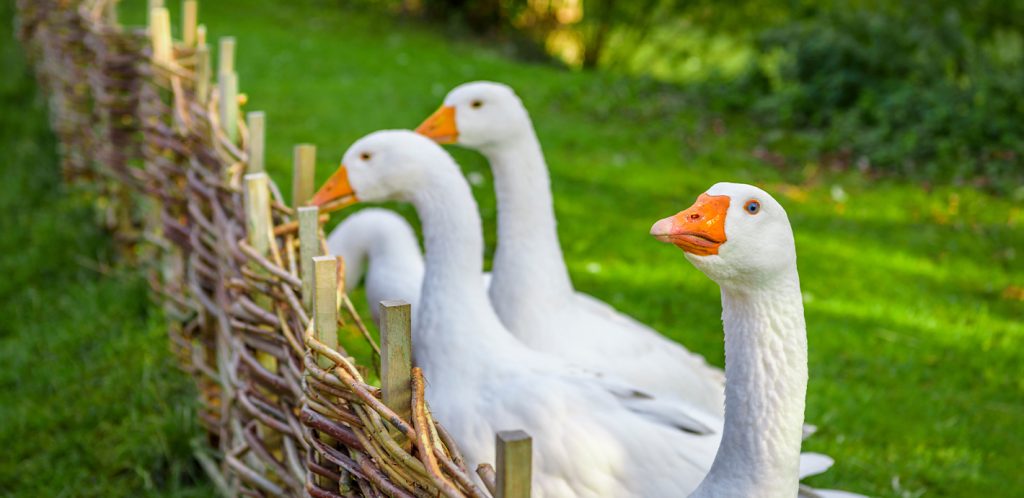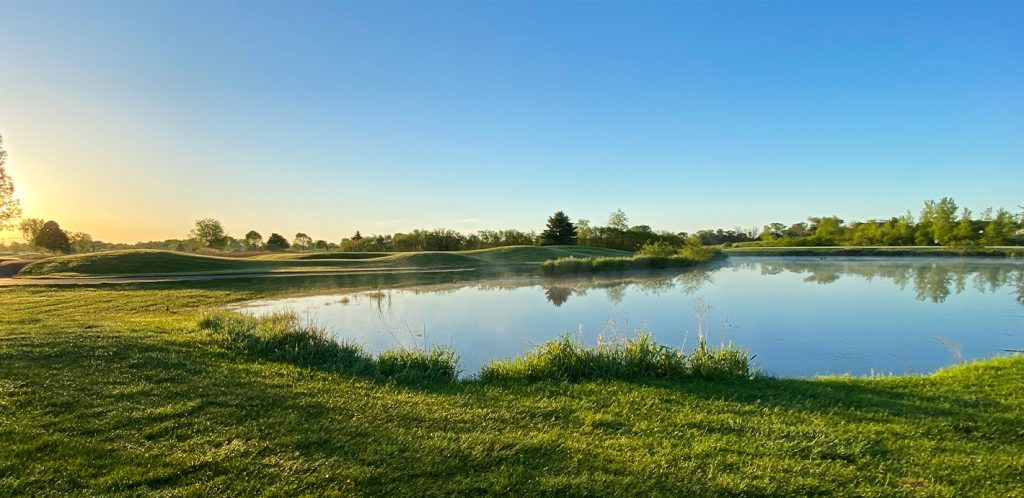
Goose and duck breeding in Poland
The goose in its wild form was and is found in various parts of the world. It is believed that the goose was domesticated about 3-4 thousand years ago, probably on the territory of present-day Egypt, from where it spread to areas of Africa, Asia and Europe. Its breeding on a larger scale was developed already in ancient Rome.
The first records of geese and ducks breeding in what is now Poland appear as early as in medieval writings. In the 19th century, there was an agricultural commodity exchange in Warsaw, where more than 3 million geese were sold each year. Later, since 1900, a poultry exhibition was organized in Lviv, where numerous species of geese and ducks were presented and traded. Back then many individual households in the countryside used to raise small flocks of geese and ducks for own consumption and for sale. Every autumn, one could spot traders herding “shod” geese for sale to Germany – shoeing geese meant preparation for the long-distance migrations by running the geese through tar and fine sand so that a hardened sole was formed.
The post-war period was a time of reconstruction of the poultry population in Poland. Goose breeding, largely for export to Germany, was carried out on countless small rural farms and was based on numerous regional species of geese. Over time, industrial slaughterhouses for geese and ducks began to emerge, establishing permanent relationships with individual breeders. In order to standardize the quality of meat and rearing technology, the Italian white goose specie was imported to Poland from Denmark in 1962. It became the basis for many years of research and breeding work conducted by the Kołuda Wielka Experimental Station of the National Research Institute of Animal Production, which led to the formation of the White Kołudzka® goose and its registration as a separate native goose breed. Today, the White Kołudzka® goose accounts for about 98% of the goose population bred for meat in Poland. Its genotype guarantees excellent quality meat and pure white plumage.


Today, Poland boasts a highly organized and vertically integrated goose and duck meat production system. Slaughterhouses coordinate the supply of reproductive goslings, and develop their own hatching plants for meat goslings. The gooslings age then distributed to family-owned breeding farms, also called as contract farms, which have been run for many generations.
For a complete picture, we also need to mention geography and climate of Poland. Poland is a predominantly flat country with numerous rivers and reservoirs, abundant in green pastures used as free range for geese and ducks. Polish agriculture develops thanks to its abundant green areas, which are low-industrialized and are not exposed to air, soil or water pollution. Poland’s variable climate is characterized by cold winters and hot summers, which is one of the main factors that has led to the development of a thick plumage that protects waterfowl from extreme temperatures.
Long-established breeding traditions, optimal natural conditions and excellent organization of the industry make Poland a source of world class goose and duck feathers and down.


Do you need additional information?